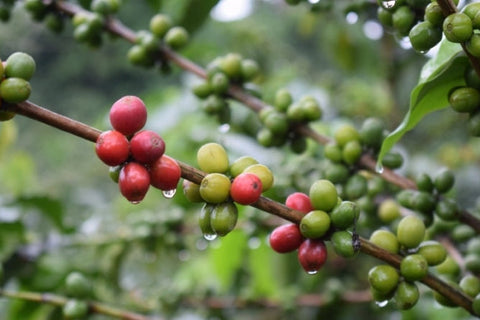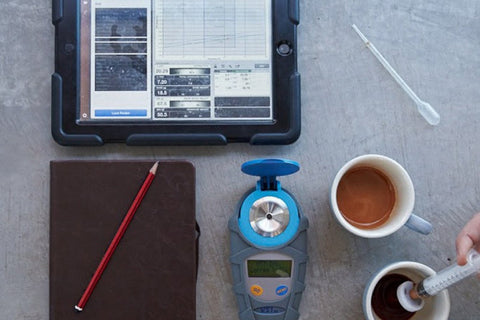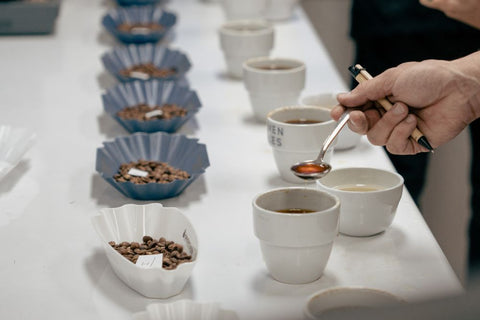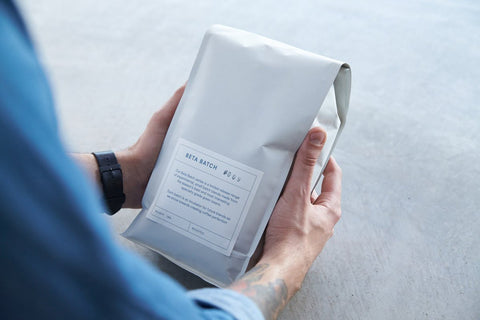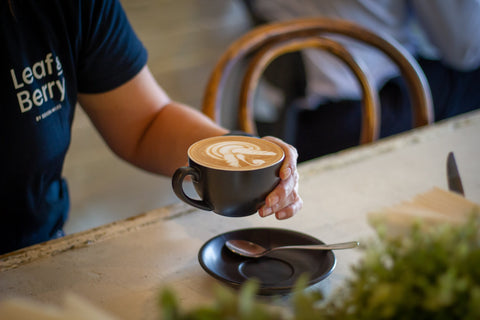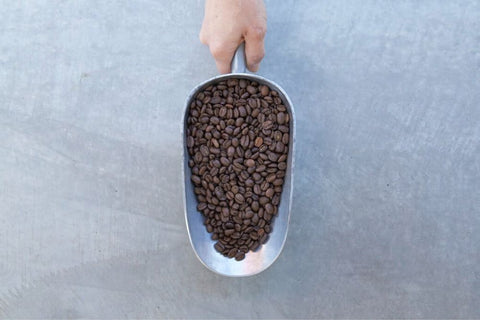I had a friend come to me the other day and ask a question I get often - “I tasted a coffee and I tasted distinct (insert flavour here). What was that?” many people have had this experience, and I’m going to let you know about some common specific flavours you may taste in your coffee, as well as why they may occur.
A region’s impact on coffee beans
What is it that changes a bean from origin to origin? We’ve been through varietal and processing and their individual impacts on flavour, but the story also comes from origin specific factors like soil, altitude, sun, wind, rainfall and what songs the farmer sings to them at night.... Okay, the latter may not be true, but like any primary product, regional specifics play a part in the flavour. For instance, you might prefer strawberries from Tasmania compared to Queensland. Tasmanian strawberries are often smaller and have vibrant acidities, however Queensland strawberries are big and sweet.
With any plant, soil has a big impact on its overall health and ability to deliver nutrients where they’re needed. In terms of coffee, the plant needs to have the right nutrient levels to deliver nutrients to the cherry. A coffee plant that lacks nutrients will result in underdeveloped fruit and an inconsistency in size and maturation of the cherry. In bad cases, the seeds will simply decompose and have really severe deformations. On the flip side, a tree that is nurtured to grow will invite biodiversity. I’ve tasted an awesome example of this in a tree that was subject to banana skins in the fertilizer. This boosted the phosphor in the soil, and in turn had a positive impact on the cup. It created a phosphoric acidity which (in simple terms) means that it highlights the acidic flavours and gives the coffee an amazing creaminess.
All about the altitude
From soil, there are very direct influences from altitude, sun and airflow. Altitude is a tricky one to discuss, so I’ll give you a small insight. Each origin has different heights in which coffee grows best. Kenya, for instance, grows coffee in areas much higher than Brazil. Specifically at origin, a higher altitude means slower ripening; slower ripening means a higher density in the seed. The higher density can mean more sweetness, a better quality acidity and more complexity. That is why you will often see high grown coffee being regarded as the best.
Sun has a similar impact on ripening to altitude. Higher altitude means less intensity in the sun, so depending on the region, a lower altitude can still have the same intensity. Distance from the equator will also impact the intensity of the sun. The further you are away from the equator, the more seasonal the sun is, and this impacts on the fruit’s growing cycle. Like anything growing, the sun has a big impact on how quickly a fruit or vegetable grows and ripens. Lots of sun can mean quick ripening and less development time, and (you guessed it!) less density.
A farm with lots of airflow can aid in cooling the cherries and reducing the temperature on the farm. This can mean a longer ripening period and again, more density. This can also aid in the processing of the fruit. Wind also aids in extending the drying process, and in a natural processed coffee, this will slow the drying of the fruit, adding more complexity.
Different regions mean different flavours
The best thing about the differences between particular coffees is in the ‘terroir’. This means that the differences in flavour between coffees are specific to the region they’re from. Often, people will have an origin that they really love, and this isn’t just a pretentious way of looking at things. You can genuinely pick up differences from origin to origin, and if given the chance to taste side by side, anyone could spot differences. Broadly, we can name three main coffee growing regions; Africa, America and Asia.
Most African coffees are known for fruit driven mostly from high quality acidities. Often the processing techniques used aid in clarifying these fruity flavours. Kenyan coffees will have a blackcurrant, grape or even tomato-like puckering acidity, along with small amounts of sweetness. Most Kenyan coffees are popular for just this - their distinct brightness in the cup. Head a little further North, and you stumble across one of the most distinct regions for flavour in the world. Ethiopian coffees are often the coffee that people rave about. A natural Ethiopian coffee will be sweet and juicy, with extremely obvious characteristics leaning towards blueberry or strawberry. A washed varietal, on the other hand, will be more like lemongrass, and have floral, usually jasmine-like aromas.
The coffee flavours of Indonesia
Next, we explore the flavours of Indonesia. Indonesian coffee is mainly processed through the wet hull method, and this makes for a distinct body and earthiness. A Sumatran coffee is normally heavy and complex, and they sometimes have a savoury flavour. If they are a natural coffee, they can have big berry-like flavours too. Papua New Guinean coffees have really nice clean, citrus acidities, and can be herby and complex, but most importantly, well balanced.
Beans from North, Central and South America
It would be remiss to just say ‘the Americas’. There really are three areas in America that export coffee - North, Central and South. We use coffee from Costa Rica, Honduras, Guatemala and Panama in Central America. Panama coffees are often regarded for being some of the best, and frequently fetch high prices. They are juicy and fruity and floral. Honduran and Costa Rican coffees, on the other hand, are usually really balanced and have crisp malic acidities; like apples or cherries. Guatemalan coffees are more like raw cacao, and boost the quality of many blends.
South America is easily the largest producer of coffee in the world. It contains the number one (Brazil), and number three (Colombia) in terms of the countries that export the most coffee produce. Brazil’s coffees are not as clean as those from Central America, but are very balanced, and contribute sweet chocolate and caramel to blends. Colombians are similar, but are usually a little crisper in their acidity, and will give blends a sweetness of panela and maple syrup. Whilst both these countries produce most of the commodity grade coffee for export, they are also well known for some of the best coffees in the world. A Brazilian coffee holds the record for the highest scoring coffee in a Cup of Excellence competition. Coffee from Cristina Mantiqueira de Minas scored 95.18, with tropical fruit flavours and a champagne acidity.
Coffee from around the world
Different environmental and regional factors influence that subtle and dramatic taste differences between coffees. Soil, altitude, sun, wind and rainfall all play a part in shaping the flavour of your daily cup. So now, when you are sipping on a coffee and decide you like it, you may be able to figure out where it is from, and explore more coffees from that particular area.



